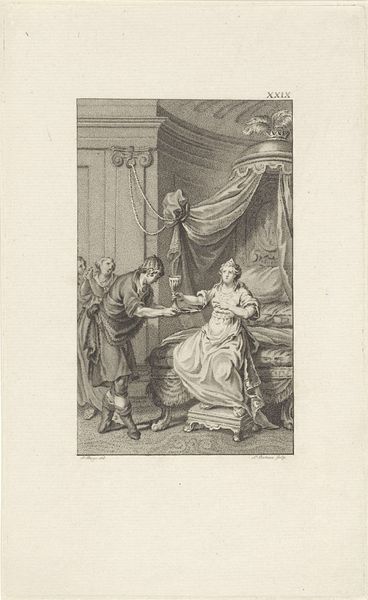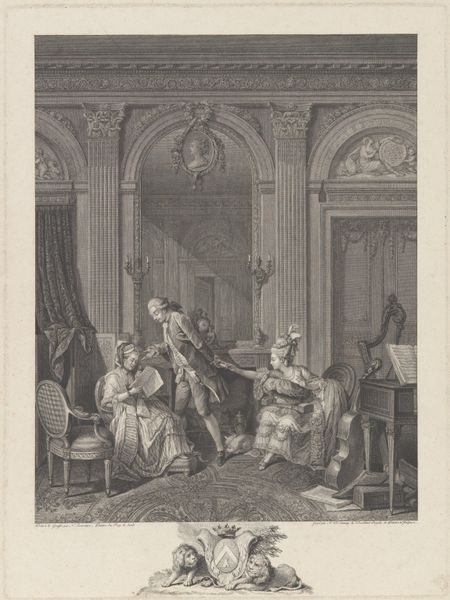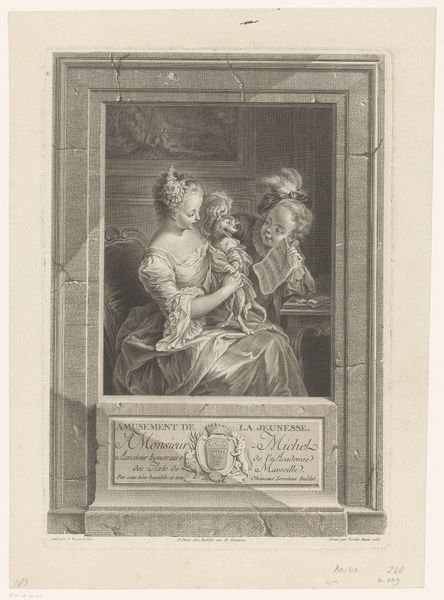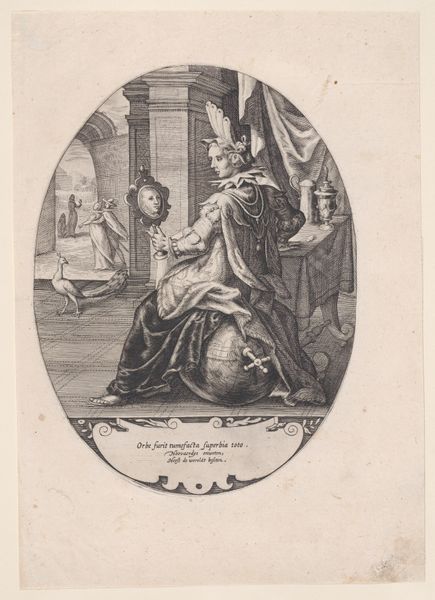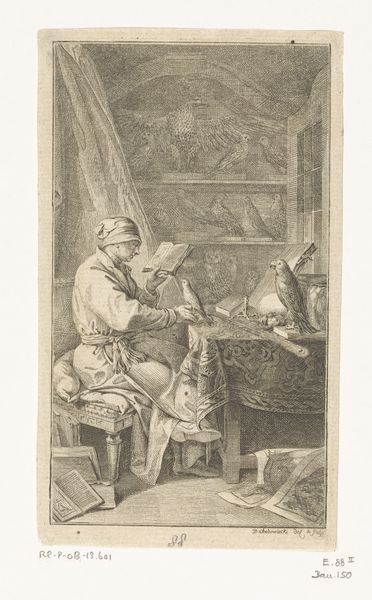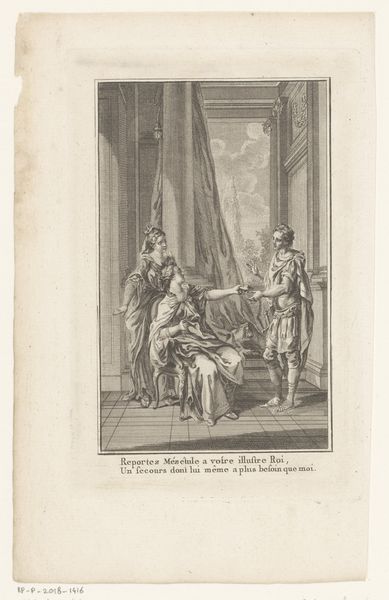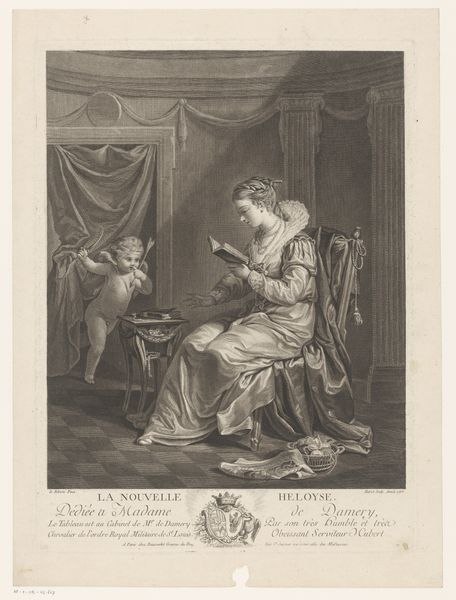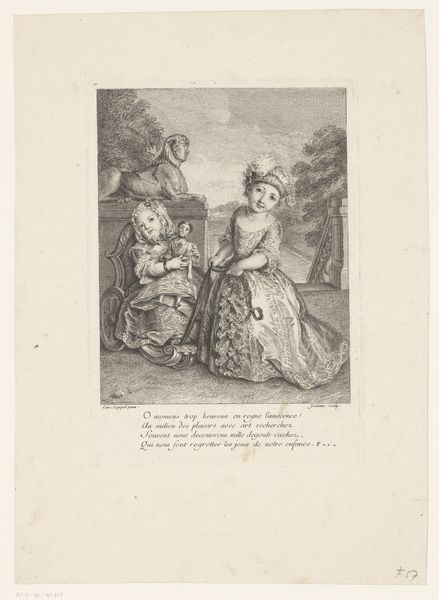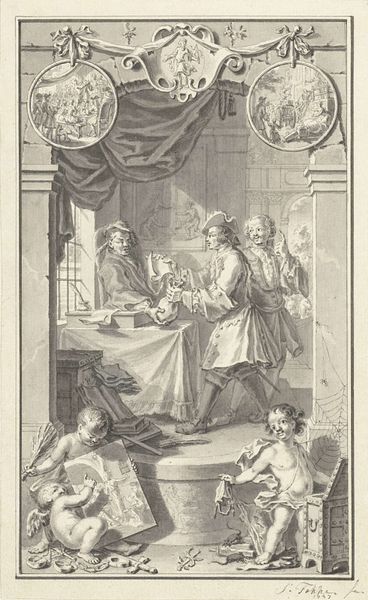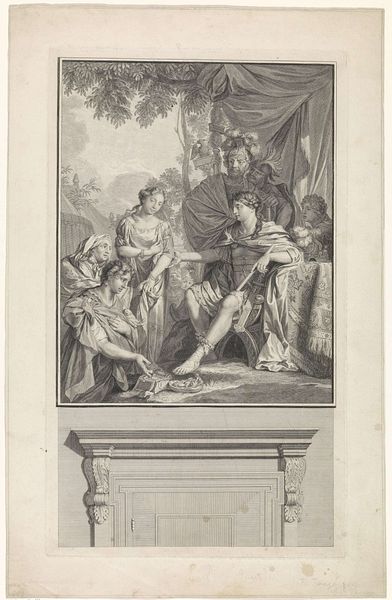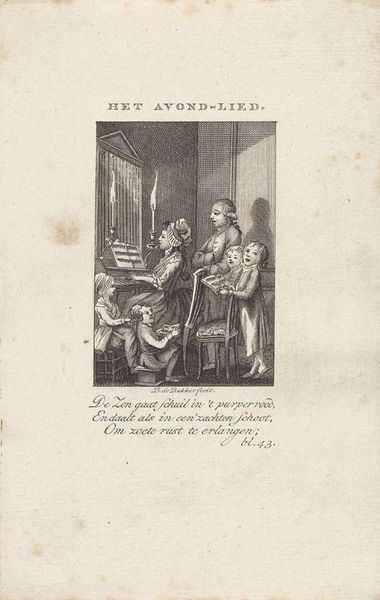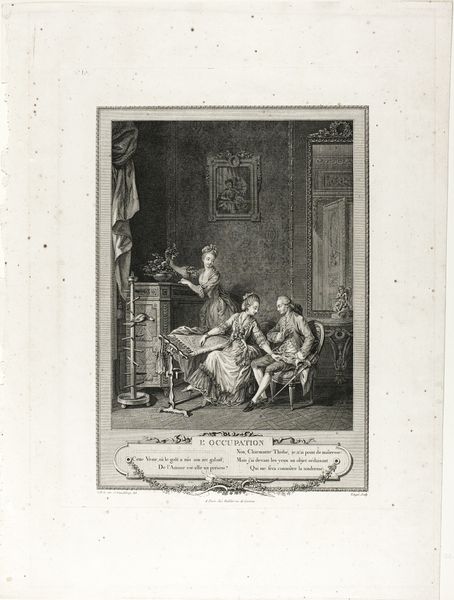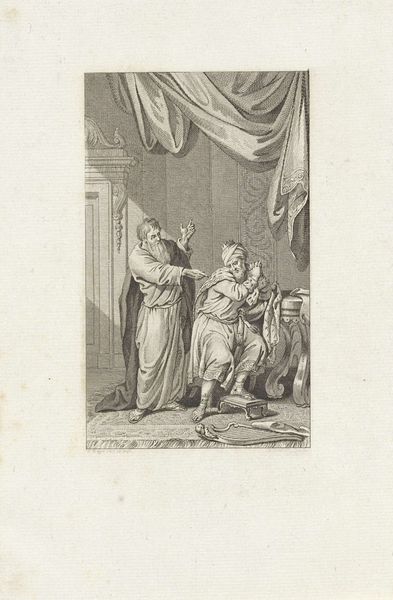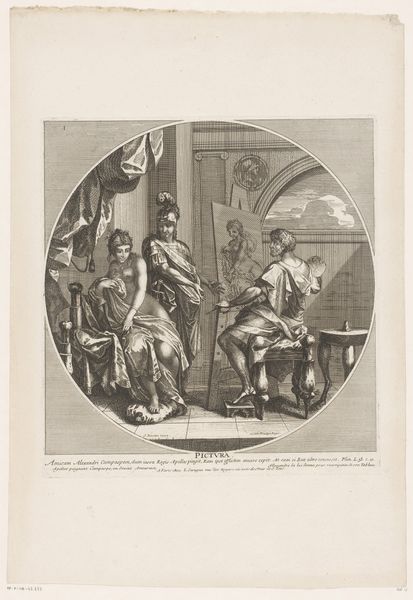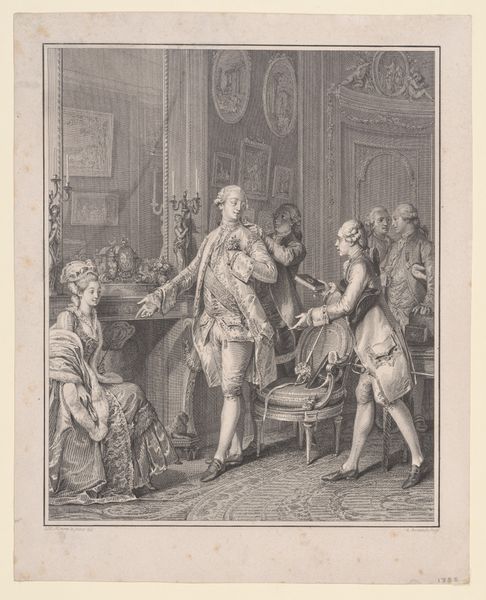
drawing, print, etching, paper, engraving
#
portrait
#
drawing
#
allegory
#
baroque
# print
#
etching
#
paper
#
group-portraits
#
france
#
genre-painting
#
history-painting
#
engraving
#
miniature
Dimensions: 278 × 267 mm (image); 295 × 343 mm (plate/sheet)
Copyright: Public Domain
Curator: This etching, titled "Allegory of Music," was created in 1756 by Etienne Fessard, after a painting by Charles-Joseph Natoire. It resides here at The Art Institute of Chicago. What's your initial read on it? Editor: Well, there's an undeniable delicacy to the engraving—a certain refinement in the hatching and cross-hatching. It lends the whole piece an airy, almost ethereal quality. The subjects seem to float within the frame. Curator: I find that interpretation quite astute, particularly if we consider the historical context of the work and how the piece centers around Madame de Pompadour, a woman who was very involved in music, a noted patron of the arts, and incredibly influential politically during the reign of Louis XV. The engraving speaks volumes about the cultural and political status she possessed. Editor: It’s undeniable that the baroque ornamentation frames a rather traditional tableau, the textures achieved by engraving, rather than the paint of Natoire’s original work. How much does its meaning rest in it's historical context, though, and how much inheres within it's line, shade, and form? The tight composition, curved lines—it all pulls us to a central focal point. Curator: And what is that focal point if not power? As Louis XV’s mistress, Pompadour was often targeted for her perceived transgressions. Her advocacy of Enlightenment ideals and influence within the court fueled much resentment among the old guard. As the King’s acknowledged mistress, the narrative possibilities within that space allowed her access and ability to subtly begin to challenge the patriarchal system in place at the time. The figures gathered at the keyboard suggest harmony, a deliberate allegorical representation of Pompadour's own ambitions, or perhaps how she wished to be seen by history. Editor: Perhaps. Though it is important to understand how Fessard translates pigment onto a different medium—a mechanical one that can produce many of this single image, but the point being how much the choice to translate painting to a repeatable art shifts how the work should be discussed. But the overall impact remains strong – a testament to the enduring appeal of allegory intertwined with expert formal control. Curator: It does make me consider that if the image was more scarce it would carry different cultural importance. Editor: Certainly. That availability helps create entirely novel channels through which a visual lexicon of meaning becomes part of our daily lives, rather than the guarded expression of elites.
Comments
No comments
Be the first to comment and join the conversation on the ultimate creative platform.
